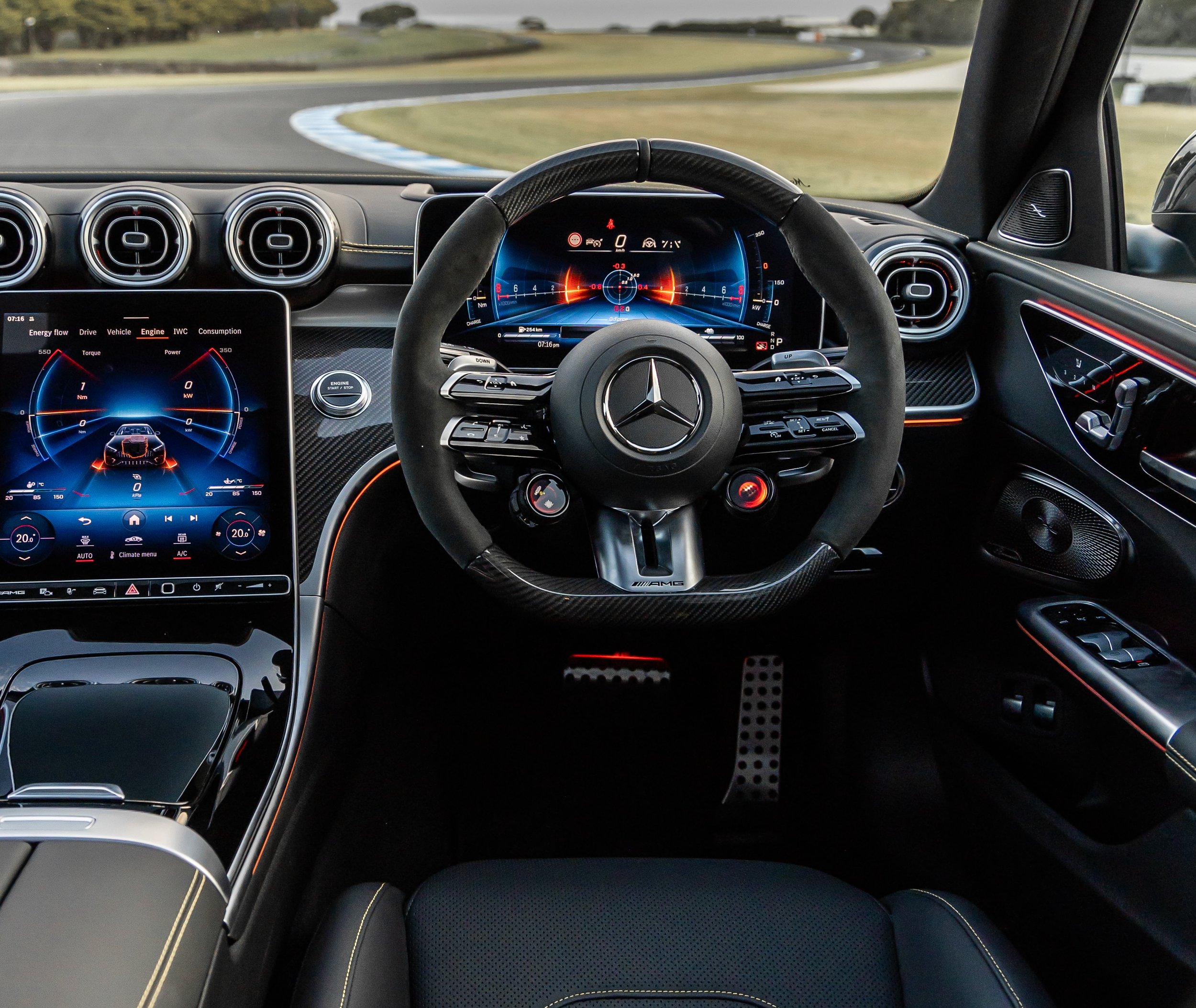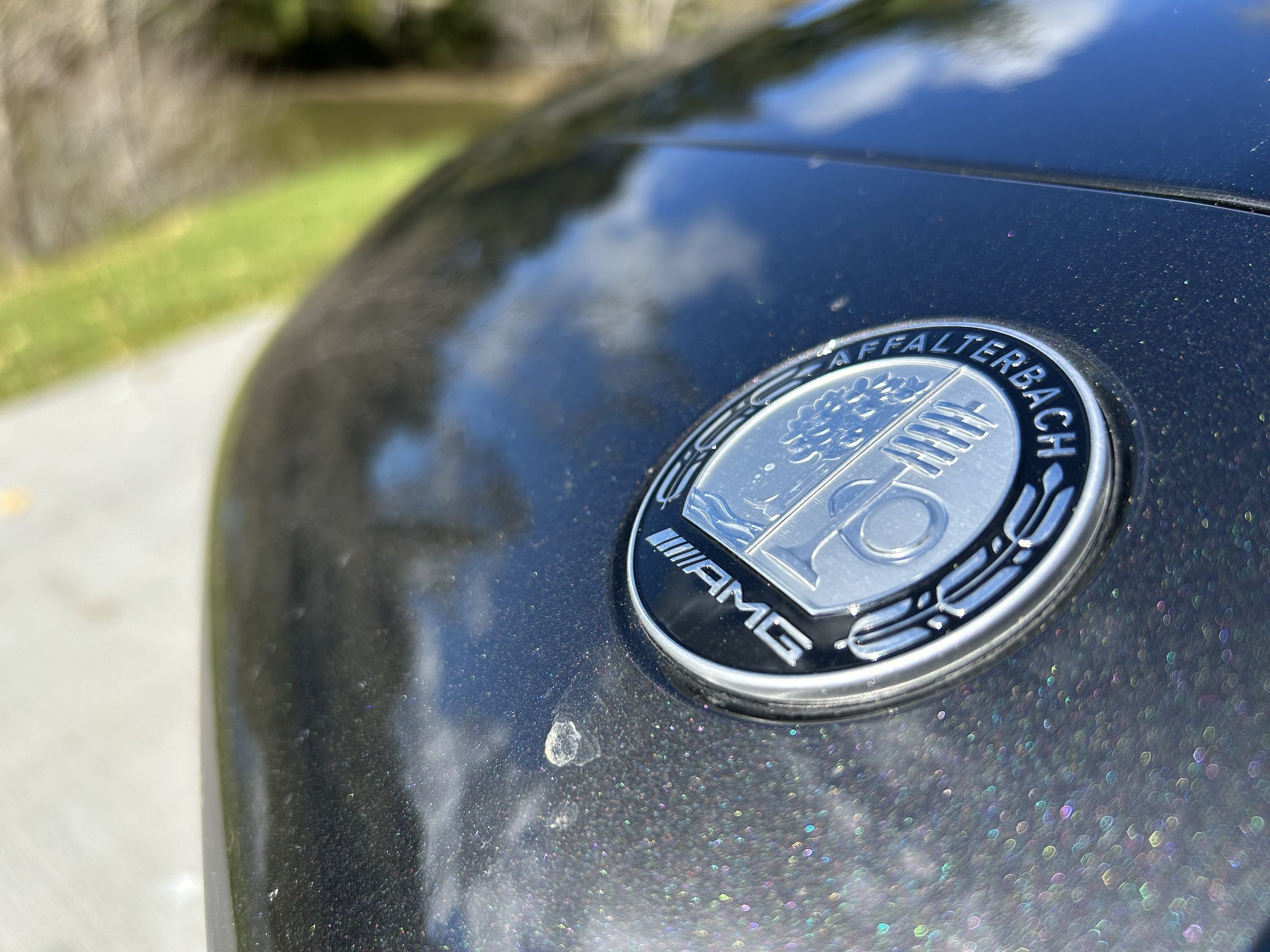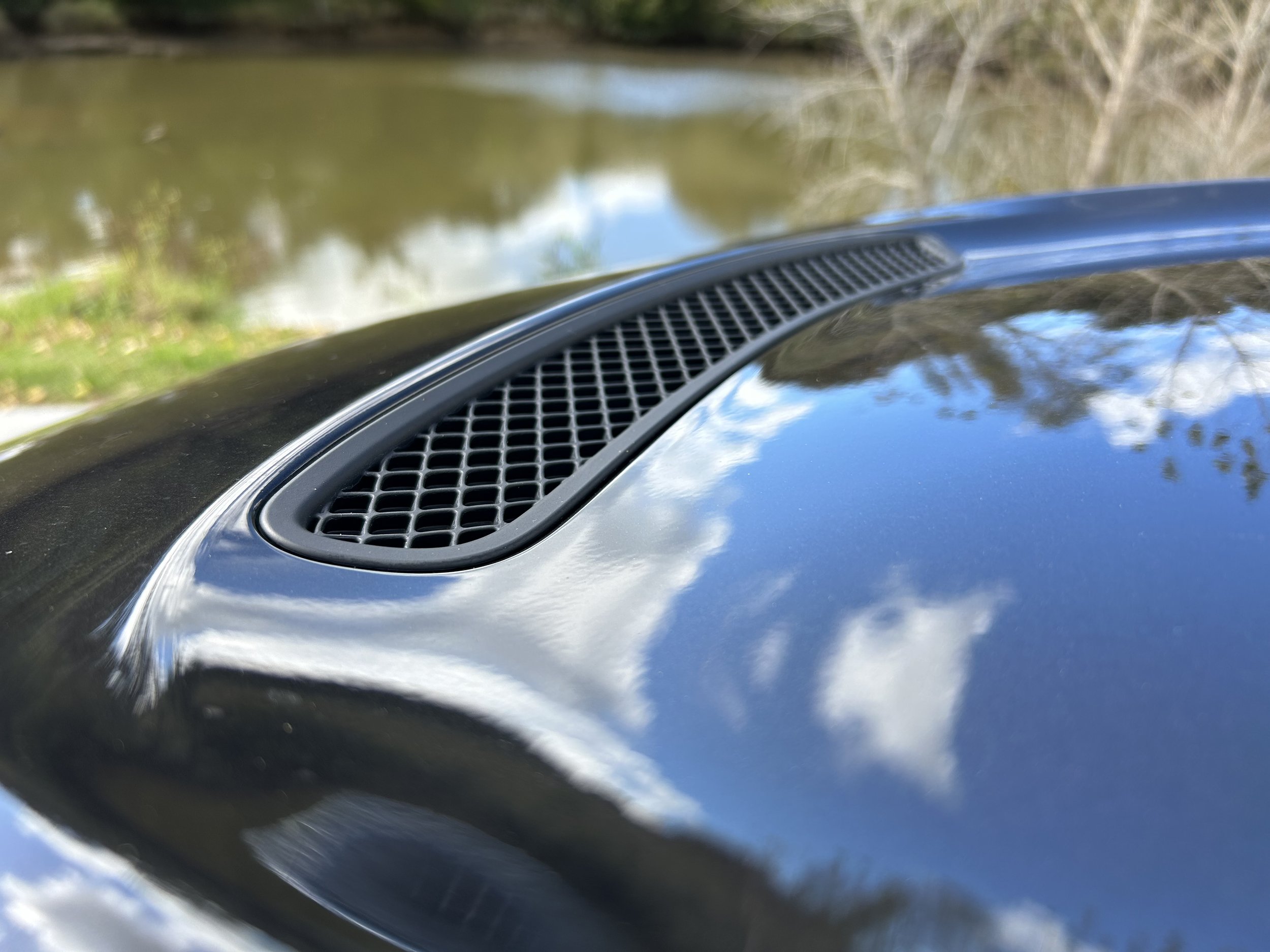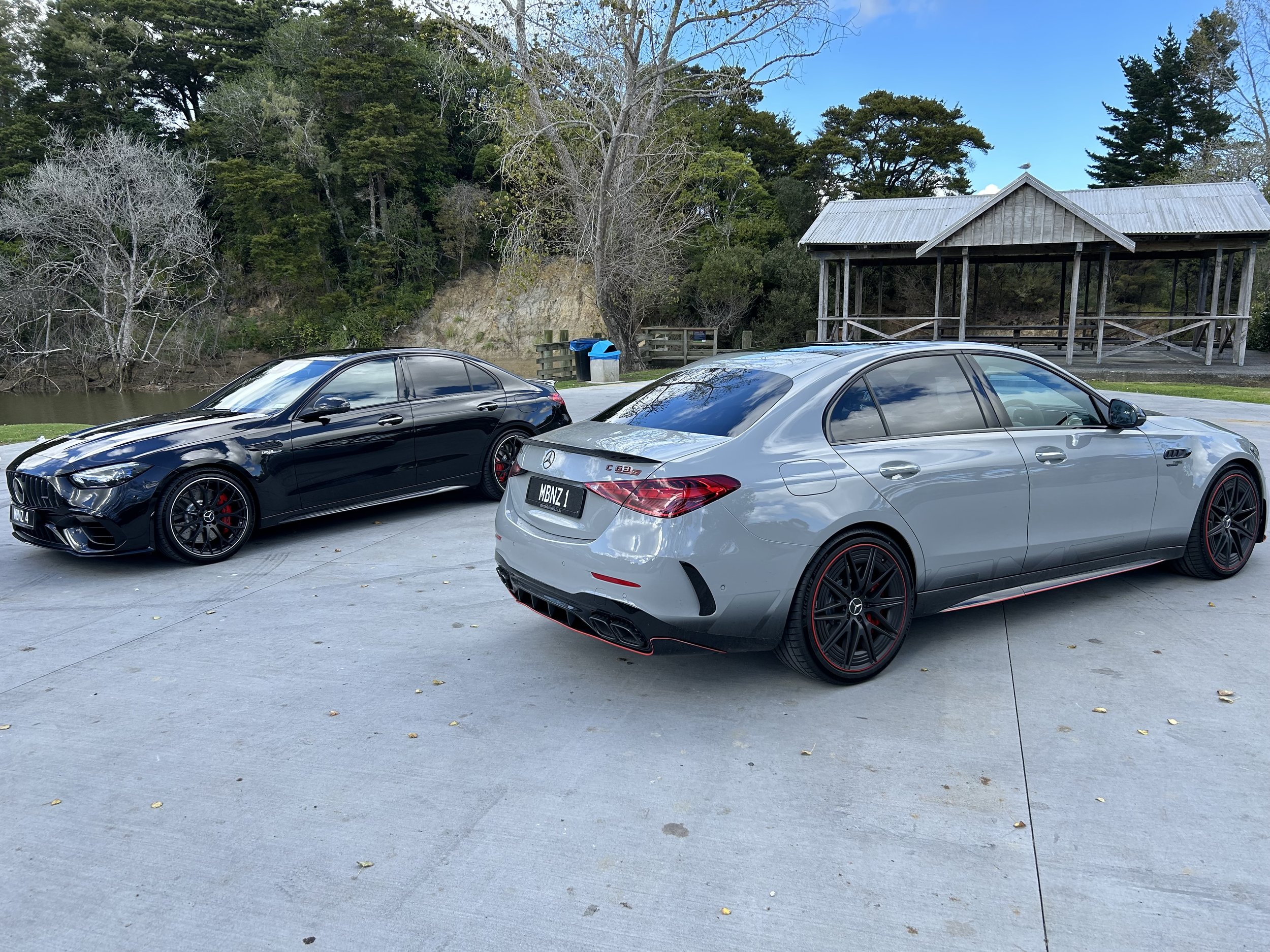First drive Mercedes-AMG C63: Star power at four footing
/Talk about a test of faith … when everything about this famous stomper sedan has changed, what chance does it have? Short answer: Plenty.
HOW hairy-chested can a 2.0-litre four-cylinder engine be?
Astoundingly.
Downsizing and electrification long being the new thing for performance players doesn’t make arrival of the new-generation of the Kiwi favourite AMG any less of a litmus test of acceptance.
Every past serving of kingpin C has dished up a beastly, brutal V8 married to rear-wheel-drive. And this C63 … doesn’t.
Four-cylinder, plug-in hybrid, all-wheel-drive, ability to run in electric-only. That’s not a revision. It’s a whole new start.
On strength of a first taste drive, the latest edition of most popular Mercedes-AMG product seems set to establish as a thrilling machine.
Yet you and I know this is nonetheless a highly controversial car.
It is what it is. Benz and its performance partner signalled ages ago that the previous C63 would be the last with the V8.
Emissions and economy necessities? Yeah, they weighed. But, ultimately, the brand simply felt it was time to move on.
The same kind of engine as a regular C-Class - a turbo 2.0-litre four-cylinder hybrid power - isn’t the same kind of engine as regular C-Class.
The AMG type, called M139, is much more closely aligned - around 80 percent commonality - to the raucous powerpoint in the AMG A and CLA 45, but with more F1 technology. It’s also basically 50 percent of the old V8.
Read on for technical detail, but the bottom line is that it’s the world's most powerful road-sorted petrol four. And then some.
When the wick is fully turned up via the ‘Boost’ mode, it unleashes an utterly bonkers 500kW power and 1020Nm torque. A lot more grunt than the last car’s V8? Just a tad.
On paper, all the numbers truly look good. But do they make it a better car?
The international reception has been … mixed. Orders are said to be down and argument about whether the new choice is four cylinders short of old-school expectation has raged hot. No more so than last August when a rumour about a V8 comeback caused a major ruction. BTW, uncross those fingers. Resurrection talk carries absolutely no truth.
If you’ve read this far, you’re likely at least intrigued. Obviously ‘ how much?’ is the next question. Brace yourself.
The Kiwi-preferred ultimate ’S’ performance package, now known as the ’S E’, asks $199,900, raising a further $15k with a Formula One (yeah, brave, when the team is pants) special edition launch pack. NZ can secure between 10-20 of those, some being already here, one on the launch.
While F1 doesn’t add any more fury, it is more than just a sticker. Note those special alloys with wind-cheating enhancement and the bespoke alpine grey paint. Buy into the F1 and you don’t need to enhance with the $9900 carbon aero and $2600 interior carbon fit outs that add … well, you can surely guess?
Saving comes at the pump. The V8s never ‘got’ economy. Red-blooded owners now caught up in Green gatherings can crow emissions of 138 grams per litre and an overall 6.1 litres per 100km overall economy. Okay, so it transpires that burn is calculated on the whiffy NEDC standard rather than our preferred WLTP3 scale, but from overseas’ testimony it is a sub-10 litre car. Who’d have imagined that from a C63?
Icing on top of is the electric mode, which though officially good for 15 kilometres’ max, nonetheless got this writer through downtown Auckland congestion heading out of town in the morning and, because the battery quickly recharges KERS-style, through a whole lot more urban dawdling in the afternoon.
As pure-hearted as it can be, hot-footed performance is the heavily baited hook. Engineers have gone to town. Past C63s have been ultimately topped by a ‘Black’ model with extra ferocity. There won’t be one this time around because there’s nothing left to be extracted.
The engine in isolation makes a rather decent 350kW and 545Nm, but adding in a 152kW/475Nm rear-mounted electric motor fed by via a 400 volt system is the spice.
The maximum total outputs are achieved in Circuit mode, with the Master or Pro AMG Dynamics settings. For on-road, the maker suggests Sport and Sport Plus, in which it share combined system outputs of 500kW and 750Nm.
Even those counts are respectively 125kW and 50Nm higher than the final V8 that, in its own right, was emphatically no laggard.
Suggestion is that, if it did not have that a complex all-wheel-drive arrangement of prop-shafts, a two-speed electric gearbox, nine-speed multi-clutch transmission and a rear limited-slip differential, the fat 20-inch rear tyres’ lifespan would be measured in days at best, if not minutes. Even with all that, it will smoke the bags in Drift mode.
Speaking of time … Benz assertion the car will knock out 0-10kmh in 3.4 seconds is not only almost electric-equivalent, but also a 0.6s edge on the most powerful version of the original 6.2, while 0.5s better than the four litre. This even though, at 2166kg, a C63 is 420kg heavier than the regular C-Class and porkier than any previous C63.
Potential of it being every bit as much a performance authority as the predecessor seems solid. But would you hear about it?
Well, yes, you do. Phwoar-by-four is still characterful, but nowhere near as strident. Yet testimony from two car nut blokes who clocked the cars when we paused at the Puhoi general store was that the new sounds special in a good way. But not special in the old way (and one would know, as he had a 6.2-litre wagon in Blighty).
Bellow and burble has been stowed with those redundant cylinders. The new sound is still authoritative, but simply less bombastic. It’s a stretch to say some of the soundtrack is absolutely synthesised. Yet you’d think only the gratuitous pops and bangs on the overrun and during gear changes are absolutely the real deal and that a lot else has been enhanced. This is a car that has external speakers to spread its message.
But actions always speak loudest and, on that side of things, it’s no wuss.
Our first drive steered clear of the Auckland region’s handiest race circuit, decently quiet country roads never eventuated and roading police were in abundance. So opportunities to stretch those legs were very limited.
It is clearly very potent. Feralness restrains in sensible daily driving modes but go to the performance settings and it’s as if the car has been rear-ended, so much greater is the enabled additional shunt.
Sport and beyond is a happy place. The brashest modes incrementally sharpen the throttle response and gear shifts and turn up the boost from the motor, but still maintain useful driver assists.
In Sport Plus and thereafter the gearbox fully is snappy, banging in ratios with more intent, and the manual setting means just that. The transmission won't up-shift for you, allowing you sit on or near the (notably smooth) rev limiter if that's what you want to do.
The suspension using steel springs and adaptive dampers allows drivers to choose between three different damping maps - Comfort, Sport and Sport Plus - that change the firmness of the ride and thus how the car behaves on the road.
At full stiffness, the car is hard enough to be jolty, with propensity to be upset by ridges across the road. Choose your moments. By contrast, the Comfort setting is … well, unlike it usually is in respect to AMG definition of the word. Which means? Basically, that it is truly supple.
The 4Matic all-wheel drive obviously influences the stability, making it easier to deploy the engine's performance. Is it a little too capable? Inevitably, there will be some who think it reduces involvement, but assuredly the steering - which has a rear-steer inclusion - and carbon-composite braking are still communicative.
All this suggests track days would work out well and that the link with Formula One is no mere marketing boast. Quite simply, the innovative new turbocharging system and that high-performance plug-in hybrid involvement wouldn’t have been conceived without the expertise Stuttgart has acquired over the years from its racing programmes.
That electrically assisted turbocharger is a wonder in its own right. Rather than being driven by exhaust gases, it uses a tiny electric motor to keep the wheel spinning and maintain turbo boost pressure at all times. Benz says its system avoids lag, the momentary delay between the driver putting their foot down and the engine responding.
The electric motor also helps to smooth out the overall power delivery under harsh acceleration. That 152kW peak only avails in 10 second bursts; in everyday use, its continuous output is around 71kW.
There’s an on-board 3.7kW AC charger to top-up the 6.1kWh directly-cooled battery, but electric pure range is shops-and-back at best. The purpose of the battery and motor is more to aid with the power delivery.
In respect to that, it’s not just there to feed the backs. If the control systems detect slippage in one of the rear wheels, the motor can instantly send more power to the front set to increase traction.
Moving on from the engine bay. With so much technology, there’s plenty of choice about how you want to tailor the car and, basically, you shouldn’t expect to locate, let alone fully understand, them all on first occasion.
Fortunately, the specific driving modes, all selectable via the infotainment screen, are self-explanatory. But beyond those is so much more.
Six-piston fixed brake calipers up front and floating one-piston calipers at the rear feature, but as well as mechanical braking, there are also four levels of regenerative braking ranging from nearly no regen to full one-pedal driving.
There’s no chance of confusion with with any regular C-class sedan. It’s not just bolder in styling but physically bigger, and significantly so.
Overall length has been increased by 83mm while the wheelbase has been extended by 10mm, the extra adding at the front. A wider front track that results in 76mm added to the C63’s width is required because of the reworked suspension. The front has been lengthened by 50mm.
The design rework lends all the usuals: Gills on the front wings, an aggressive-looking front splitter, a diffuser out back, a fixed spoiler on the boot lid. The bonnet features twin power domes and a functional racecar-inspired air outlet. The muscle car vibe is undeniable.
The interior provisions with two sports seat options, the AMG Performance buckets in the launch cars being the heavily bolstered kind that arrive with a pack that also adds an AMG Performance steering wheel in nappa leather.
Behind the steering wheel is a large rectangular digital instrument cluster with a portrait-aspect infotainment touchscreen in the centre running the latest MBUX, with inbuilt satellite navigation with augmented reality view. The NZ specification also delivers a panoramic glass sunroof, ambient interior lighting, wireless smartphone charging, a head-up display, heated front seats and a Burmester 3D surround-sound system.
If heading off for a weekend, pack light. The battery array and electric motor being sited underneath the boot very obviously hits luggage space. Whereas the standard C-Class has 455 litres’ capacity, and the old C63 had 435, this C63 offers 280.
Easy to see why. The part of the compartment nearest the seats is half as deep as the area behind. FYI, this issue hasn’t swayed MBNZ into returning the C63 wagon - which also suffers the same, but is more capacious nonetheless - back into the fold.
The regular C-Class has a five star ANCAP rating, but whether than applies to the C63 has yet to be fully explained. AMG versions generally don’t get tested independently.
As expected, it outfits with a massive suite of advanced driver assist systems including autonomous emergency braking with pedestrian and cyclist detection, active lane-keeping assist, lane-departure warning, rear cross-traffic alert, blind-spot monitoring, and adaptive cruise control.
There’s also a driver attention monitor and fatigue alert, as well as a 360-degree camera system and front and rear parking sensors. There are 10 airbags, one a front-centre device that protects against head clashes between front-seat occupants in a crash.
A new C63 that’s a ‘new way’ C63 is a lot to take in. Benz doesn’t believe this car is a premature punt; after all, they say, in another decade AMGs will likely divest engines entirely, for electric power. On the other hand, they also are quick to remind that the V8 still exists in other AMG cars, at similar price. Though they’re all SUVs. So not quite the same thing.
Losing the V8 hurts. It was such a weapon. Yet so is the new. The difference is that what you get now is actually several cars, depending on how you operate it.
It’s easy to be derisive, yet deep down you know it has to be a smart choice, even if the BMW M3, Audi RS5 and Alfa Romeo Giulia Quadrafoglio it’ll be measured against are all V6s. Even if you have to pay Road User Charge because it’s a plug-in hybrid.
In becoming Benz’s second-most technologically advanced production car, behind only the very special Mercedes-AMG One hypercar, the C63 is not the car it used to be.
But also has more grunt than a Ferrari Enzo. So it’s hardly lost star appeal.
The writer attended this event as a guest of the distributor, with travel, accommodation, meals and a small gift provided.
























